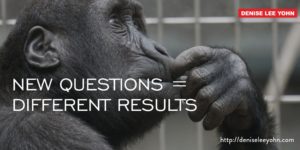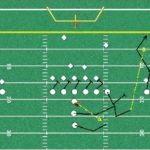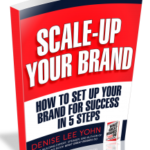Ask Different Questions to Get Different Results
If three makes a trend, then lately I’ve noted a new trend in strategic thinking. It involves the discipline to ask different questions to get different results — and not just different results — better, clearer, more sustainable results. I came across the idea to ask different questions to get different results from three different people — a consultant, a professor, and an entrepreneur. Although each of them suggested a different question, together they provided a new perspective on strategy development — that is, sometimes an answer can be less important than the question.
Different question #1: What problem are you trying to solve?
I came across the first admonishment to ask a different question in a recent Harvard Business Review article by Thomas Wedell-Wedellsborg, an independent consultant, speaker, and coauthor of the book Innovation as Usual. Wedell-Wedellsborg related a story about the owner of an office building trying to address tenant complaints about a slow elevator. The typical solutions (replace the elevator, install a stronger motor, upgrade the algorithm that runs the elevator, etc.) address the question of how to make the elevator run faster.
But Wedell-Wedellsborg suggests that if you ask a different question — how to make the wait seem shorter — you identify many other potential solutions (put up mirrors next to the elevator, play music, install hand sanitizer.) He pointed out that the new question, “What problem are you trying to solve,” isn’t intended to help find the “real” problem — rather, the approach helps reveal if there is a better one to solve. Perhaps solving a different problem would be cheaper, easier, faster.
Different question #2: What job does your customer need to get done?
I recently had the pleasure of hearing Harvard Business School professor Clay Christensen speak at a conference. Since the conference was hosted by a technology platform company that helps companies collect and manage customer data, Christensen surprised the audience by suggesting that collecting more and more data about customers is actually leading companies in the wrong direction. His point made sense, though, when he explained that simply knowing about a customer isn’t the same as knowing what the customer is trying to do.
When a customer buys a product or use a service, he said, they are essentially “hiring” it to help them do a job. Some customer jobs are purely functional (store clothes in a closet), others are emotional (find a fulfilling career) — but they are all a means to an end. So the new question we need to ask is, “What does the customer hope to accomplish? What is the job to be done?” By considering customer jobs, we not only better understand who and what we compete with today, but also we can identify who or what is likely to disrupt us and/or our category in the future. Consider how a too-narrow view of what customers were trying to accomplish led rental car companies to caught off guard by rail hailing services.
Different question #3: What are you replacing?
Basecamp founder Jason Fried recently wrote a blog post based on the new question, “What is someone going to stop doing when they start using your product?” He went on to say that, when developing a new product, the classic entrepreneur mistake is to only think about what it offers.
To understand how to make the new product successful, we must think about what we are asking people to switch from and what would prevent them from doing so. The switching costs of habit, fear of the unknown, and momentum can be powerful; and if they’re smart, established players will build even stronger glue into their offerings. So we must consider the context or the new product. And I would add that figuring out how to create desire for an alternative to an existing solution might lead to an entirely different solution.
Framing has always played a critical role in strategy development, but when taken together, these three questions seemed to offer a refreshing approach. So this new trend — to ask different questions to get different results — may not be all that new. But it does reflect the kind of mindset that is needed in today’s business environment.
“We thought that we had the answers, it was the questions we had wrong.” – Bono
related:


